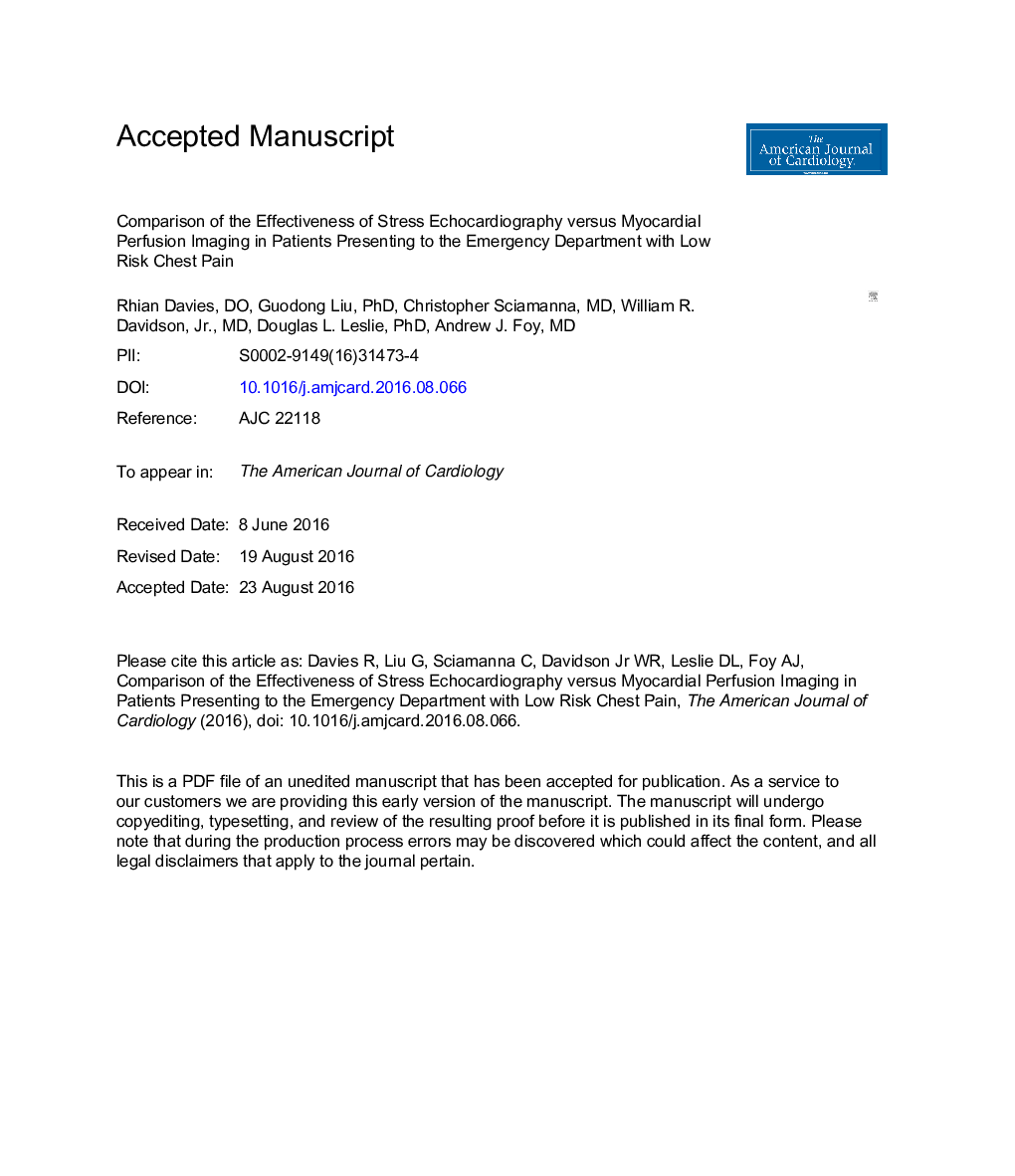| Article ID | Journal | Published Year | Pages | File Type |
|---|---|---|---|---|
| 5595211 | The American Journal of Cardiology | 2016 | 23 Pages |
Abstract
The aim of this study was to compare clinically relevant cardiovascular outcomes and downstream resource utilization associated with stress echocardiography (SE) and myocardial perfusion imaging (MPI) in emergency department patients with low-risk chest pain. This was a retrospective analysis of health insurance claims data for a national sample of privately insured patients over the period January 1 to December 31, 2011. Subjects were selected who presented to the emergency department with a primary or secondary diagnosis of chest pain and underwent either SE or MPI. The primary end points were the percentage of patients in each group who underwent downstream cardiac catheterization, revascularization, repeat noninvasive testing, return emergency department visit with chest pain, and hospitalization for myocardial infarction. The mean length of follow-up was 190 days in both groups. Overall, 48,202 patients or 24,101 propensity-matched pairs were included in the final analysis. Compared with SE, MPI was associated with significantly higher odds of subsequent cardiac catheterization (adjusted odds ratio [AOR] 2.15; 95% confidence interval [CI] 1.99 to 2.33) and revascularization procedures (AOR 1.58; 95% CI 1.36 to 1.85) and repeat emergency department visits (AOR 1.14; 95% CI 1.11 to 1.19). The odds of repeat testing and myocardial infarction did not differ between groups. The average cost of downstream care was significantly higher in the MPI group ($2,193.80 vs $1,631.10, p <0.0001). According to the a priori rules specified for this comparative analysis, SE is more effective than MPI for privately insured patients who present to the emergency department with chest pain. In conclusion, these findings demonstrate the importance of assessing diagnostic tests based on how they affect hard end points because identification of disease, in and of itself, may not confer any clinical advantage.
Related Topics
Health Sciences
Medicine and Dentistry
Cardiology and Cardiovascular Medicine
Authors
Rhian DO, Guodong PhD, Christopher MD, William R. MD, Douglas L. PhD, Andrew J. MD,
